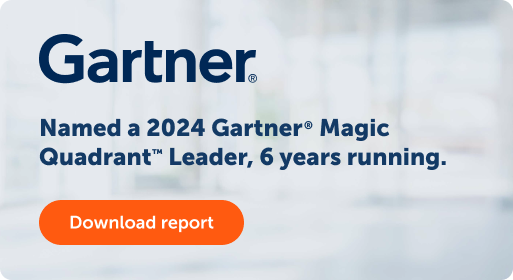- Products
Automate any process, anywhere Streamline complex, mission-critical workflows with the Agentic Process Automation System. Explore the Platform Explore the Platform
- AI System
- Build AI Agents
Automate advanced tasks with AI Agent Studio.
- Streamline workflows
Rapidly design and deploy with Automator AI.
- Process complex documents
Extract and organize data with Document Automation.
- Discover opportunities
Identify inefficiencies with Process Discovery.
- Orchestrate automations
Centralize initiatives with Automation Workspace.
- Build AI Agents
- Automation System
- Govern programs
Establish frameworks and oversight with CoE Manager.
- Automate from any app
Get AI-powered assistance with Automation Co-Pilot.
- Speed workflows with cloud
Power instant data exchange with serverless Automation Anywhere Cloud Service
- Unify systems
Connect applications and workflows with seamless integrations.
- Govern programs
- View all Products
-
- Solutions
Featured Solutions
 Google Cloud Google Cloud and Automation Anywhere empower enterprises to fast-track their AI + Automation journey. Google Cloud
Google Cloud Google Cloud and Automation Anywhere empower enterprises to fast-track their AI + Automation journey. Google Cloud Amazon Web Services Streamline workflows, reduce costs, and make automating even easier when you combine the Agentic Process Automation System with AWS Amazon Web Services
Amazon Web Services Streamline workflows, reduce costs, and make automating even easier when you combine the Agentic Process Automation System with AWS Amazon Web Services- By Industry
- By Function
- By Technology
- View all AI Solutions
-
- Resources
Get Community Edition: Start automating instantly with FREE access to full-featured automation with Cloud Community Edition.
Featured
 Named a 2024 Gartner® Magic Quadrant™ Leader for Automation. Celebrating Six Years of Recognition as a Leader. Download report Download report
Named a 2024 Gartner® Magic Quadrant™ Leader for Automation. Celebrating Six Years of Recognition as a Leader. Download report Download report - Customers
New & improved certifications
 Give yourself a competitive advantage with Automation Anywhere's industry-recognized certifications.Explore Certifications Explore Certifications
Give yourself a competitive advantage with Automation Anywhere's industry-recognized certifications.Explore Certifications Explore Certifications - Company
Get in touch with us Get help, know more, learn, ask questions, or just say Hi! Contact Us Contact Us
- Get To Know Us
- Announcements
- Society
-
Blog
The Automation Journey to the Cloud Will Happen in Planes

Automation’s journey to the cloud is a natural evolution that can be summarized by a simple phrase: Automation follows applications.
A best practice for building an automation stack includes segregating components by planes, which can be thought of as technical areas of operation, similar to the seven layers of the Open Systems Interconnection (OSI) model.
These planes — the management plane, control plane, and data plane — each perform a different function and carry a different type of traffic. By creating an automation environment where these planes are independent of each other, a developer is able to build more dynamic and secure applications.
Installing the planes independent of each other gives customers choices in deployment models to provide the best operational efficiencies and to cater to different application consumption scenarios.
That’s precisely what Automation Anywhere did when architecting our Enterprise A2019 Robotic Process Automation (RPA) platform. Let’s look at how this has evolved for the Automation Anywhere Enterprise product from three aspects:
- Management plane — manages automation; in Enterprise A2019, this is the Control Room function
- Control plane — the automations or bots; wants to be near apps and data; this is Bot Runner (Bot Agent)
- Data plane — what to automate; where the source for the automated data is stored and the proximity to processes that are being automated
Since the majority of automation occurs in processes involving software applications, it makes sense that in an on-premises-only setup with applications such as Microsoft Office, automation would predominantly be on premises only. In this on-premises-only scenario, the control plane (where the bots run) is on premises, closer to the data plane, where the enterprise applications are.
As applications evolve onto hybrid and then Software as a Service (SaaS) delivery models, such as Office 365, automation software — i.e., the bots that automate the apps — would follow them onto hybrid and then cloud-based models.
In the hybrid scenario, bots are deployed in private clouds, which also host enterprise applications. In a SaaS scenario where all of the enterprise applications are in the public cloud, the control plane is flexible enough to be deployed in the cloud, enabling on-demand consumption models.
In each of the above scenarios, the management plane, which houses the business data-agnostic Control Room, can be deployed anywhere based on customer needs. This decoupling of the three planes provides maximum deployment flexibility — a first in the RPA industry.
Automation evolution by each major release

In the Enterprise RPA platform in versions up to 10.x, all three planes are on premises. This keeps the automations fairly homogeneous. But it also limits options.
With Enterprise 11.x, the Enterprise product was broken into its key components such that, for example, the management plane — i.e., the Control Room — could be deployed on a private cloud while the other planes, control (Bot Runner) and data, stayed on premises.
With Enterprise A2019, we have a fully cloud-native option, where you can place each of the planes anywhere you wish, including on premises, in your own private cloud, in the public cloud, or in a SaaS-based option managed by Automation Anywhere. So, you could have management in the cloud but data stored on premises, creating a fast, flexible, and very secure automation environment.
This is only possible by separating the three main planes. And the only RPA development platform architected to do this is Automation Anywhere Enterprise A2019.
Automation in the future
Automation will continue to evolve in complexity and efficacy, and cloud automation will play a key role. In fact, one area where automation will mimic the cloud is in bots on demand, where a user can spin up and spin down bots as needed, much in the same way they spin up virtual machines to meet demand.
In this environment, you can “rent” bots for short periods of time, such as during the end of the month or end of the year, when volumes increase massively compared to the other days of the month or year.
This business practice, where a business “owns the base and rents the peaks,” is a very smart and cost-effective way to run an organization, especially one that experiences spikes in its business cycles, such as the retail industry.
In the future, where data and processes go, automation will follow — wherever that may be. And both environments, cloud and on premises, will continue to grow and thrive. Thus, there will be a persistent need for a system that works in all three planes.
The best environments will continue to be flexible where data, especially private data, is segmented out from the control and management planes. This will allow businesses to keep data within their control, store and process locally, and store in the cloud.
Cloud-native, multiplane RPA
Like their counterparts in the sky, automation planes are the safest way go — i.e., to manage automations, whether they’re on premises, in the cloud, or a hybrid of both. As you build out your intelligently automated organization, be certain you have a cloud-native, multiplane RPA platform to ensure optimal performance and security.
Learn more about the difference between cloud-washed and cloud-native RPA platform architectures.
Keep control of your
automation journey.
About Abhijit Desai
Abhijit Desai is a product management leader and strategic thinker with a track record of introducing new products through innovation and jump-starting struggling products to growth, with a strong focus on strategy and execution. He serves as a product management engineer for cloud products at Automation Anywhere
Subscribe via Email View All Posts LinkedInAuthor's recent posts
Get to know the Agentic Process Automation System.

For Students & Developers
Start automating instantly with FREE access to full-featured automation with Cloud Community Edition.



